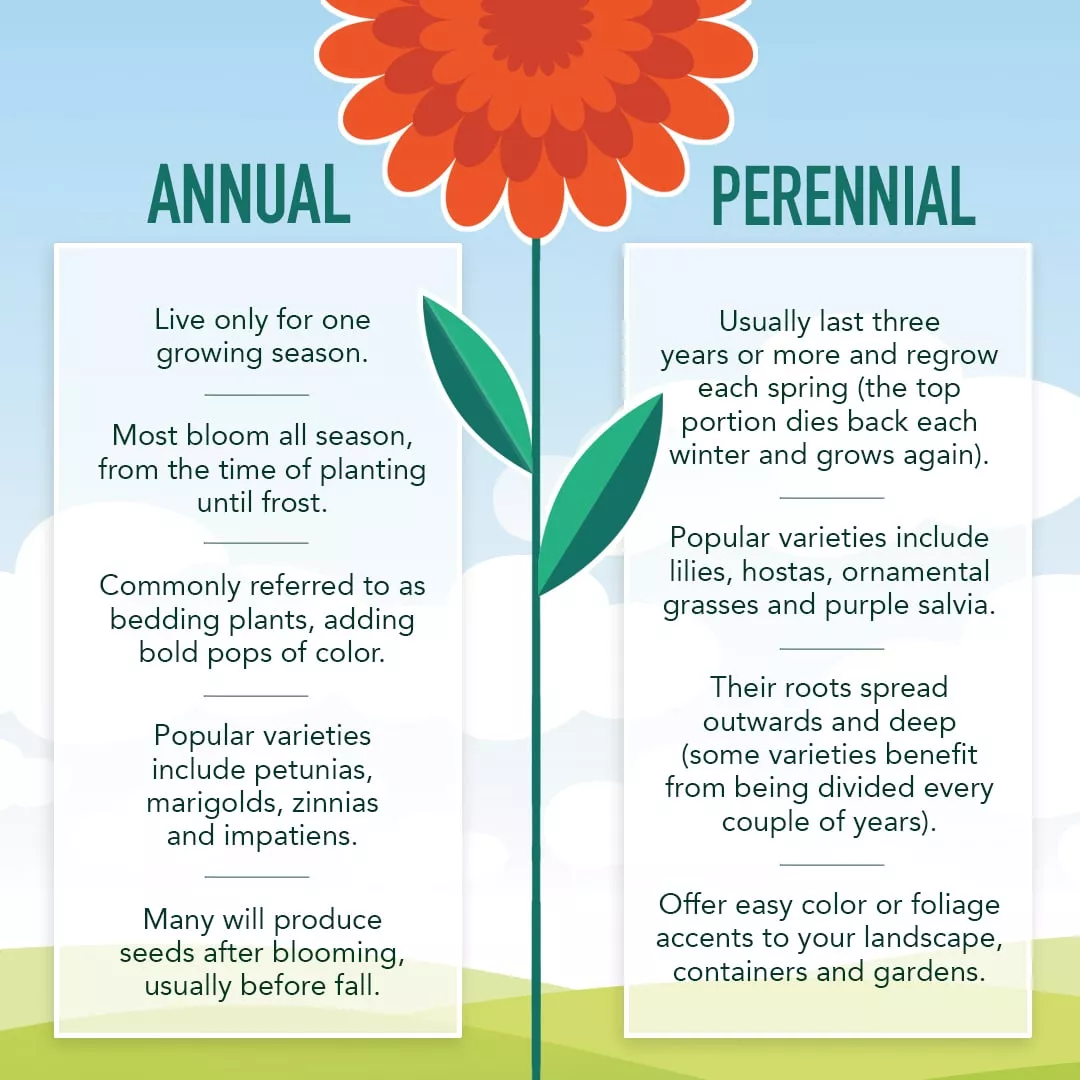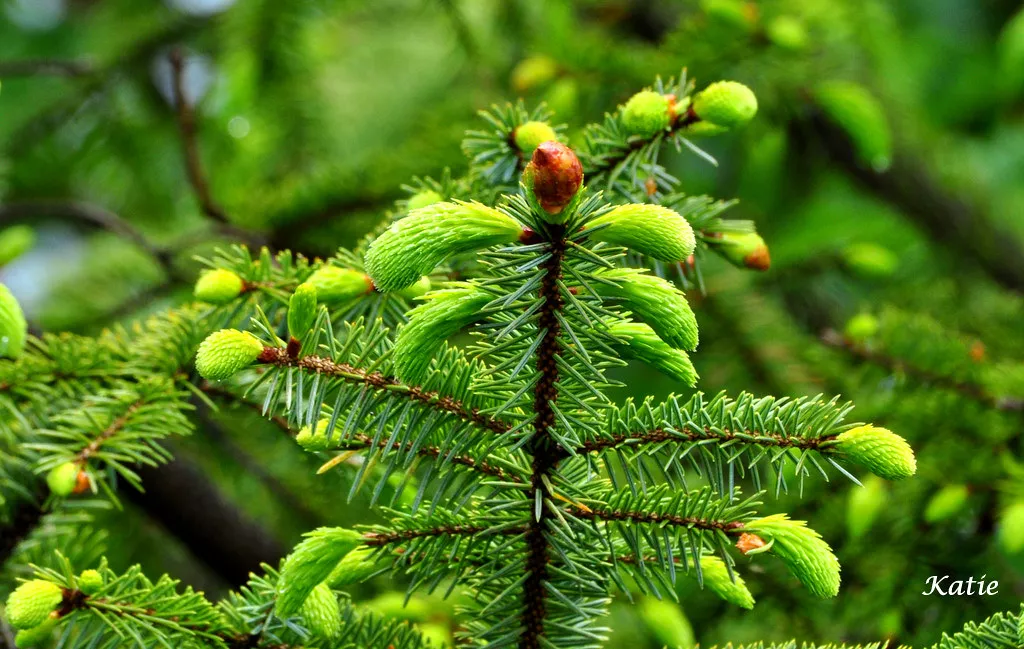Annual plants complete their life cycle in one growing season. Perennial plants live for several years and bloom multiple times.
Gardeners often wonder whether to plant annuals or perennials. Annual plants, such as marigolds and zinnias, grow, bloom, and die within one year. They require replanting each season. Perennials, like hostas and daylilies, return year after year, offering long-term garden beauty.
Choosing between them depends on garden goals and maintenance preferences. Annuals provide vibrant, seasonal color, perfect for instant impact. Perennials, with their lasting presence, offer stability and reduced yearly planting effort. Both types have their unique benefits and can complement each other in a well-designed garden.
Characteristics Of Annual Plants
Understanding the differences between annual and perennial plants is crucial for any gardener. Annual plants have unique characteristics that set them apart. They complete their life cycle within a single year. Let’s dive into the specifics of these fascinating plants.
Life Cycle
Annual plants go through their entire life cycle in one growing season. They sprout from seeds, grow, bloom, produce seeds, and then die, all within a year. This rapid life cycle allows for multiple planting opportunities within a single year. Gardeners often choose annuals for their fast growth and vibrant blooms.
Common Examples
Many garden favorites are annual plants. Here are some common examples:
- Marigolds: Known for their bright orange and yellow flowers.
- Petunias: Popular for their wide range of colors and patterns.
- Zinnias: Appreciated for their long-lasting, colorful blooms.
- Sunflowers: Famous for their tall stems and large, sunny blooms.
- Impatiens: Loved for their shade tolerance and vibrant colors.
These plants are easy to grow and add instant beauty to any garden. They are perfect for gardeners who enjoy experimenting with different flower varieties each year.
Characteristics Of Perennial Plants
Perennial plants are a gardener’s favorite for many reasons. They live for more than two years, making them a long-term investment. Perennials come back every year, saving you from replanting. They add beauty to your garden with minimal effort. Let’s dive into their characteristics.
Life Cycle
Perennial plants have a unique life cycle. They grow and bloom over the spring and summer. In the fall and winter, they die back to the ground. But their roots survive and grow again in spring. This cycle repeats for many years. Here is a simple breakdown:
| Season | Activity |
|---|---|
| Spring | Growth and blooming |
| Summer | Full bloom |
| Fall | Prepare for dormancy |
| Winter | Dormant, root survival |
Common Examples
There are many types of perennial plants. They come in various shapes, sizes, and colors. Here are some common examples:
- Hostas: Known for their large, green leaves.
- Daylilies: Bright, colorful flowers that bloom for a day.
- Peonies: Large, fragrant blooms in late spring.
- Black-eyed Susans: Yellow flowers with a dark center.
- Lavender: Aromatic flowers used in cooking and crafts.
These plants not only beautify your garden but also attract pollinators. Butterflies and bees love perennial flowers. They offer a steady food source year after year.
Benefits Of Annual Plants
Annual plants live for one growing season. They bring many benefits to your garden. Let’s explore why they might be the right choice for you.
Seasonal Color
Annual plants bloom all season long. They offer bright, vibrant colors. Your garden will look fresh and lively. You can choose from a wide range of colors. This makes it easy to match your garden’s theme.
Some popular choices include:
- Marigolds
- Petunias
- Zinnias
These plants bloom quickly. You don’t have to wait long to see results. Your garden will be full of life in no time.
Flexibility
Annual plants offer great flexibility. You can change your garden’s look each year. This allows you to experiment with different designs. If you don’t like one year’s design, you can try something new next year.
Here are some ways annuals provide flexibility:
- Easy to replace
- Wide variety of options
- Quick growth
With annuals, you are not committed to a long-term plan. This makes them perfect for beginners. You can learn and improve your gardening skills without stress.
| Benefit | Description |
|---|---|
| Seasonal Color | Provides bright colors all season long. |
| Flexibility | Allows for easy changes and experimentation. |

Credit: sodsolutions.com
Benefits Of Perennial Plants
Perennial plants offer numerous benefits for gardeners and landscapers alike. Their unique characteristics provide advantages that make them a popular choice.
Longevity
Perennial plants live for more than two years. They grow back every spring without needing to be replanted. This long lifespan reduces the effort required for replanting each year.
Perennials establish strong root systems. These roots help them survive harsh weather conditions. They also improve soil structure over time.
Lower Maintenance
Perennial plants need less care compared to annuals. They require less frequent watering and fertilizing. This makes them ideal for busy gardeners.
Perennials are also more resistant to pests and diseases. Their hardy nature reduces the need for chemical treatments. This leads to a healthier garden environment.
Here is a comparison of maintenance needs:
| Maintenance Task | Annual Plants | Perennial Plants |
|---|---|---|
| Replanting | Every Year | Every Few Years |
| Watering | Frequent | Less Frequent |
| Fertilizing | Frequent | Less Frequent |
| Pest Control | High | Low |
Designing With Annuals
When it comes to garden design, annuals offer vibrant, seasonal appeal. Their short lifespan means you’ll enjoy a fresh look each year. Let’s explore how to design with annuals.
Seasonal Beds
Seasonal beds burst with color. They create a stunning visual impact. Annuals fill gaps in your garden quickly. You can change the design each year.
- Choose bright colors for a lively look.
- Mix heights for depth and texture.
- Plant in groups for a bold statement.
Consider the following annuals for seasonal beds:
| Annual | Color | Height |
|---|---|---|
| Marigold | Yellow, Orange | 12-36 inches |
| Petunia | Pink, Purple, White | 6-18 inches |
| Impatiens | Red, Pink, White | 6-24 inches |
Container Gardening
Annuals thrive in containers. They add color to patios and balconies. Containers offer flexibility and mobility.
- Choose large containers for root space.
- Ensure good drainage to prevent root rot.
- Use a mix of trailing and upright plants.
Great annuals for containers include:
- Geraniums: Bright and easy to care for.
- Begonias: Perfect for shade areas.
- Lobelia: Ideal for trailing over edges.
Designing with annuals allows creativity and flexibility. Enjoy their vibrant colors and unique designs each year.
Designing With Perennials
Perennials are plants that live for more than two years. They bring beauty and color to gardens year after year. Designing with perennials can create a low-maintenance garden that looks great in every season. Let’s explore how to use perennials in your garden.
Perennial Borders
Perennial borders are rows of plants along edges or fences. They create a beautiful frame for your garden. These borders can be filled with colorful flowers and lush greenery.
- Choose plants that bloom in different seasons.
- Mix tall and short plants for variety.
- Use a mix of colors and textures.
This way, your garden looks lovely all year round. Some great choices for perennial borders include daylilies, hostas, and irises.
Mixed Gardens
Mixed gardens combine perennials with annuals, shrubs, and trees. This creates a diverse and dynamic landscape. You can enjoy different plants and flowers throughout the year.
- Start with a base of hardy perennials.
- Add annuals for seasonal color.
- Include shrubs for structure and height.
A mixed garden offers variety and interest. It also attracts birds and butterflies. Some excellent perennials for mixed gardens are coneflowers, black-eyed Susans, and lavender.
| Perennial | Bloom Time | Height |
|---|---|---|
| Daylilies | Summer | 2-4 feet |
| Hostas | Spring to Fall | 1-3 feet |
| Irises | Spring | 1-3 feet |
Combining Annuals And Perennials
Combining annuals and perennials can create a vibrant garden. Annuals bloom for one season, while perennials return every year. Together, they bring color and variety to your garden. Here’s how to blend them effectively.
Layering Techniques
Layering adds depth and interest to your garden. Start with tall perennials at the back. They form a solid backdrop. Next, plant medium-height annuals in the middle. Finally, use low-growing annuals and perennials in the front. This creates a tiered effect.
Consider these tips for successful layering:
- Choose plants with different bloom times.
- Mix textures and leaf shapes.
- Ensure taller plants don’t block sunlight.
Here’s a simple table to guide you:
| Layer | Plant Type | Example |
|---|---|---|
| Back | Perennials | Sunflowers |
| Middle | Annuals | Marigolds |
| Front | Low-Growing Plants | Pansies |
Color Coordination
Color coordination is key to a harmonious garden. Choose a color palette that complements your space. Bright colors like red and yellow can energize. Softer hues like pink and blue calm the senses.
Follow these steps for effective color coordination:
- Pick a primary color: This will be your main color.
- Select complementary colors: These should enhance your primary color.
- Mix annuals and perennials: Ensure they follow the color scheme.
For example, a garden with a primary color of purple could include:
- Purple petunias (annuals)
- Lavender (perennials)
- Yellow marigolds (annuals) for contrast
This blend ensures a visually appealing garden.

Credit: www.pinterest.com
Maintenance Tips
Taking care of annuals and perennials can be different. Each type of plant has specific needs. Here are some essential maintenance tips to help your garden thrive.
Watering Needs
Both annuals and perennials need water. But their needs can vary.
- Annuals: Need regular watering. They have shallow roots.
- Perennials: Often need less water. They have deeper roots.
Watering in the morning is best. It helps prevent disease.
Fertilization
Fertilization helps plants grow strong. But the requirements differ.
- Annuals: Benefit from monthly feeding. Use balanced fertilizer.
- Perennials: Need fertilizer once in spring. Slow-release types work well.
Always follow the instructions on the fertilizer package. Over-fertilization can harm your plants.

Credit: www.countryliving.com
Frequently Asked Questions
What Is The Main Difference Between Annuals And Perennials?
Annuals complete their life cycle in one year, while perennials live for multiple years, often blooming seasonally.
Do Perennials Need To Be Replanted Every Year?
No, perennials return each year without needing to be replanted, unlike annuals which must be replanted annually.
Are Annuals Or Perennials Better For Beginners?
Perennials are generally easier for beginners because they require less replanting and maintenance compared to annuals.
Can You Mix Annuals And Perennials In A Garden?
Yes, mixing annuals and perennials can create a diverse and continuously blooming garden throughout the year.
Conclusion
Choosing between annuals and perennials depends on your gardening goals. Annuals offer vibrant, seasonal color. Perennials provide lasting beauty year after year. Consider your climate and maintenance preferences. Both have unique benefits. Happy gardening!



